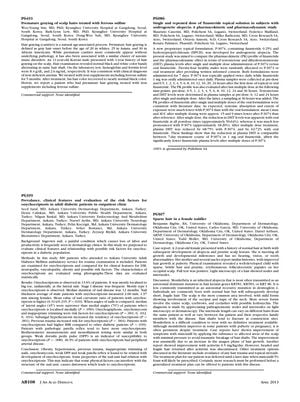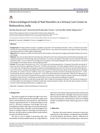Prevalence, Clinical Features, and Evaluation of Risk Factors for Onychocryptosis in Adult Diabetic Patients in Outpatient Clinic
April 2013
in “
Journal of the American Academy of Dermatology
”

TLDR Diabetic patients often have ingrown nails due to obesity, high blood pressure, past injuries, bad nail trimming, nail fungus, weak foot pulse, and weak knee reflex.
The document reports on a study that evaluated the prevalence and clinical features of onychocriptosis (ingrown nails) and its relationship with potential risk factors in a diabetic population. The study included 300 patients from Ankara University's Adult Diabetes Mellitus outpatient service. Onychocriptosis was observed in 13.6% of patients, primarily affecting the big toe, unilaterally, and on the lateral side. The median duration of the nail disease was 12 months, with a nail thickness average of 2.00 mm in males and 1.97 mm in females. The study found that obesity, hypertension, previous trauma, inappropriate trimming of nails, onychomycosis, weak dorsalis pedis pulse (DPP), and weak patella reflex were related to the development of onychocriptosis. Additionally, certain physical properties of the nail unit were associated with the condition, suggesting that physical factors can alter the structure of the nail unit and lead to onychocriptosis. No commercial support was identified for this study.




